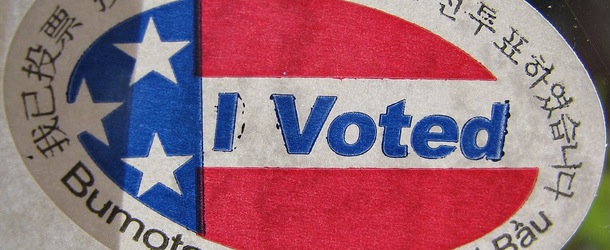Seeing that it’s Election Day, I figured I’d take a look at historic mortgage rates to see if there is any correlation between their direction and elections.
Specifically, I wanted to see if there was any significant movement after an election took place, as a new Republican or Democrat (or Roseanne) could potentially sway the direction of the economy.
At least, that’s what the aggressive pundits out there always seem to bark in November.
For my little project, I relied upon archives of the Primary Mortgage Market Survey from Freddie Mac, which stretch back to 1971.
Let’s Run the Numbers
- I wanted to find out if mortgage rates are impacted by presidential elections
- So I looked at 30-year fixed rates in November versus December
- During an election year since 1972
- The results were interesting…
The very first presidential election since that time came on November 7, 1972, when Richard Nixon pummeled George McGovern in a landslide victory.
During the month of November in 1972, the 30-year fixed averaged 7.43%. It increased to 7.44% in December, and stayed put through March. Not much movement at all.
In the 1976 election, Carter defeated Ford, and the 30-year fixed stood at 8.81%. It dropped to 8.79% a month later, and was pretty much unchanged for an entire year afterwards.
In 1980, Reagan took office after crushing Carter, and the 30-year fixed averaged 14.21%. It increased to 14.79% a month later, and to 18.45% nearly a year later. But that was more to do with staggering inflation than anything else.
Four years later, Reagan won again, and the 30-year fixed was a slightly improved 13.64%. In December, it dipped down to 13.18%, and improved dramatically over the next year as the economy got back on track.
In 1988, George H.W. Bush came to power, and the 30-year was a much more reasonable 10.27%. It rose to 10.61% a month later, and didn’t do a whole lot after that.
Bush lost to Clinton in 1992, and mortgage rates on the 30-year fixed were a relatively low 8.31%. They fell to 8.21% in December, and dipped into the six-percent range a year later.
Clinton stayed in office in the 1996 presidential election, and the 30-year fixed averaged 7.62%. It barely budged to 7.60% a month later, nor did it move much the following year.
When George W. Bush won in 2000, the 30-year fixed averaged 7.75%, and actually fell a decent amount to 7.38% in December. Still, nothing noteworthy.
Bush won again in 2004 when the 30-year fixed averaged 5.73%. It inched up to 5.75% in December, and did little the following year.
In 2008, Barack Obama defeated McCain, and the 30-year fixed stood at 6.09%. It tanked to 5.29% in December, but only because the economy was in tatters, unemployment was surging, and the Fed had announced a plan to buy mortgage-backed securities.
In 2012, Obama won again and mortgage rates literally didn’t move.
The latest presidential election in 2016 resulted in victory for Donald J. Trump over Hillary Rodham Clinton. Interestingly, mortgage rates jumped 0.43%, which is more than 11% higher in a month’s time.
What Trends Popped Out?
- There’s no clear direction either way
- We’ve seen rates go up, down, and sideways
- Though there have been some big moves in recent years
- The one trend is rates have never gone up after a Democrat won
There’s no clear direction in rates from November to December in an election year. Rates have moved up, down, or in the case of the 2012 election, remained completely unchanged.
So it looks as if the election itself doesn’t have much impact on mortgage rates, even though some frenzied loan officers will urge you to lock or float depending on who’s projected to win.
The only small takeaway, if you can even call it that, is mortgage rates have fallen month-over-month after a Democrat has been elected since 1976, other than being flat in 2012. It’s a mixed bag for Republicans.
More importantly, it’s the state of the economy that matters, and we all know that won’t change overnight, no matter who wins.
[What mortgage rate can I expect?]
30-year fixed average from November to December in election year:
2016 – November 8, 2016 (Donald J. Trump) 3.77% – up to 4.20%
2012 – November 6, 2012 (Barack Obama) 3.35% – unchanged
2008 – November 4, 2008 (Barack Obama) 6.09% – down to 5.29%
2004 – November 2, 2004 (George W. Bush) 5.73% – up to 5.75%
2000 – November 7, 2000 (George W. Bush) 7.75% – down to 7.38%
1996 – November 5, 1996 (Clinton) 7.62% – down to 7.60%
1992 – November 3, 1992 (Clinton) 8.31% – down to 8.21%
1988 – November 8, 1988 (George H.W. Bush) 10.27% – up to 10.61%
1984 – November 6, 1984 (Reagan) 13.64% – down to 13.18%
1980 – November 4, 1980 (Reagan) 14.21% – up to 14.79%
1976 – November 2, 1976 (Carter) 8.81% – down to 8.79%
1972 – November 7, 1972 (Nixon) 7.43% – up to 7.44%
Also see: Mortgage rates vs. presidential inaugurations

